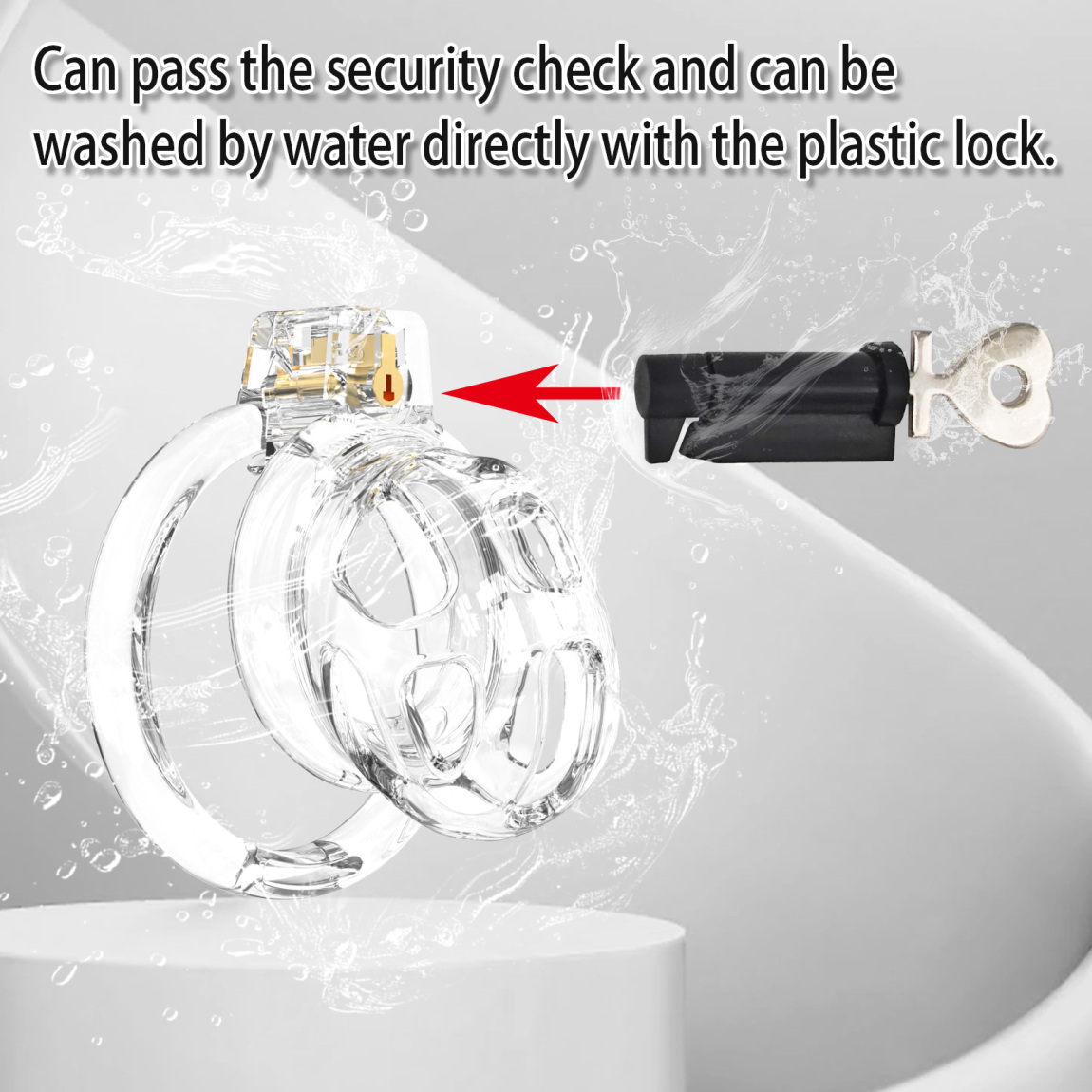Traveling with Chastity: TSA Issues with Metal vs Plastic
2025-09-12
Airport security is stressful enough without the extra worry of wearing a chastity device. For travelers exploring chastity play or long-term wear, the biggest concern is simple: how will TSA react? Many wonder whether a metal cage will set off alarms or if a plastic one will pass unnoticed. Understanding how different materials interact with screening technology can save time, embarrassment, and frustration.
This guide explains what actually happens at security checkpoints, how metal and plastic devices behave under scanning, and what steps you can take to keep your journey smooth. Whether it’s a short domestic flight or an international trip, preparation is key to a stress-free experience.
Understanding TSA Screening and Chastity Devices
Why Airport Security Flags Unusual Items
TSA relies on walk-through metal detectors and advanced imaging technology to protect passengers. Anything worn under clothing—especially a device with unfamiliar shapes—will be visible to scanners or alarms. A chastity cage is not a prohibited item, but it will appear as an anomaly, and officers are trained to investigate anything unexpected.
Types of Chastity Devices You Might Wear
Chastity devices are typically made from metal or plastic/TPE/silicone. Each type has benefits for everyday use, but travel introduces unique challenges. Knowing how each material interacts with security equipment is the first step toward a confident trip.
Metal Chastity Cages: What to Expect at TSA
Metal Detectors Trigger Alarms
Even a small amount of stainless steel or chrome-plated hardware is enough to set off a walk-through metal detector. If you choose to fly while wearing a metal cage, secondary screening is almost guaranteed.
Full-Body Scanners Show the Shape
Advanced Imaging Technology (AIT) scanners create an outline of the body and highlight foreign objects. A metal cage will appear clearly. The officer may request a private pat-down or additional inspection.
Tips for Metal Cage Travelers
-
Arrive early: Build in at least 30 extra minutes for potential screening delays.
-
Carry a key or emergency release: Keep it accessible but discreet, ideally in your carry-on or with a trusted partner.
-
Stay calm and polite: TSA officers handle unusual personal items every day; professionalism and courtesy go a long way.
-
Request a private room: You have the right to a private screening if the device must be inspected or removed.
Plastic Chastity Cages: A Lower-Profile Option
Less Likely to Trigger Metal Alarms
Plastic, TPE, or silicone cages contain little or no metal, so they typically pass through metal detectors without activating alarms. For many travelers, this is the primary reason to choose plastic.
Body Scanners Still Detect Shapes
Even though plastic is not metallic, body scanners show anything that doesn’t match the human body outline. TSA may still notice a strange shape and request a pat-down. The difference is that you are less likely to face the noise and attention of a metal detector alarm.
Tips for Plastic Cage Flyers
-
Pick a model with minimal metal parts, such as plastic locks or integrated seals.
-
If questioned, give a brief, calm explanation; most officers only need to confirm there is no security risk.
-
Carry spare plastic locks in your luggage in case you are asked to remove the device and re-secure it afterward.

Comparing Metal vs Plastic for Travelers
Security and Detection
-
Metal: Almost certain to trigger alarms; secondary inspection is common.
-
Plastic: Lower chance of alarm but still visible on imaging scans.
Comfort on Long Flights
-
Metal: Heavier, less forgiving during hours of sitting.
-
Plastic: Lightweight and flexible, making it easier to wear during long flights.
Privacy Concerns
-
Metal: More likely to require private screening or explanation.
-
Plastic: Easier to remain discreet, though not completely invisible.
Durability and Security
-
Metal: Extremely durable and secure, favored for long-term chastity play.
-
Plastic: Lightweight, comfortable for long flights.
Preparing for a Smooth TSA Experience
Plan Ahead
Decide whether to wear your device through security or remove it before entering the checkpoint. Some travelers choose to wear it until reaching the airport restroom and then remove it discreetly.
Carry Documentation if You Wish
Although not required, some travelers keep a simple note explaining that the device is a personal item for private use. This can help if an officer asks for clarification.
Know Your Rights
You are entitled to a private screening if the device requires inspection. Politely request this if you feel uncomfortable with a public pat-down.
Hygiene on Long Trips
Long flights can cause discomfort. Bring antibacterial wipes or a small cleaning kit to stay fresh—especially important if you plan to remain locked during the entire journey.
Advice from the Rupipi Chastity Community
Members of Rupipi chastity often share real experiences of flying while locked. Their stories highlight that plastic cages typically create fewer issues at checkpoints. Many recommend packing spare locks and carrying the key in a secure, discreet place in case removal becomes necessary.
The rupipichastity community also stresses the importance of communication with your partner or keyholder before traveling. Agree on how to handle unexpected inspections so you are not caught off guard if security staff request that the device be removed.
Additional Tips for Stress-Free Travel
Timing Is Everything
Give yourself extra time at the airport. Rushing only adds to anxiety if secondary screening occurs.
Choose Flights Wisely
If possible, select flights with longer layovers to reduce the pressure of tight connections.
International Considerations
Security procedures vary by country. Research the rules for both your departure and arrival airports. Some nations may have different standards for personal devices or screening protocols.
Be Honest if Questioned
A simple statement such as "This is a personal medical or intimate device" is usually enough. TSA officers are trained to handle sensitive matters professionally and privately.
Conclusion
Traveling with a chastity device does not have to be intimidating. Metal cages almost always trigger metal detectors and lead to secondary screening, while plastic cages are less likely to set off alarms but can still be seen by body scanners.
By preparing early, carrying spare locks, and knowing your rights, you can navigate TSA procedures without panic. For most travelers, a well-fitted plastic device provides the smoothest experience and the least interruption to your journey. With careful planning and the insights shared by the rupipichastity community, you can fly confidently—locked or unlocked—while keeping your trip discreet and stress-free.
Frequently Asked Questions
Will TSA confiscate a chastity device?
No. TSA’s role is to identify security threats, not to police personal lifestyle choices. They may inspect the item or ask you to remove it, but confiscation is highly unlikely.
Should I tell TSA in advance?
You are not required to announce it beforehand. Simply explain if an officer asks about an item detected during screening.
Can I request privacy during inspection?
Yes. You have the right to a private room for any pat-down or device check. Politely ask for it if you prefer discretion.
Is it safe to wear a chastity cage on a long flight?
Yes, if you are accustomed to wearing it for extended periods. Make sure the fit is correct and consider bringing wipes or a small cleaning kit for comfort.
Which material is best for frequent travelers?
Plastic or TPE cages are generally preferred for travel because they avoid metal detector alarms and are more comfortable during long flights.









